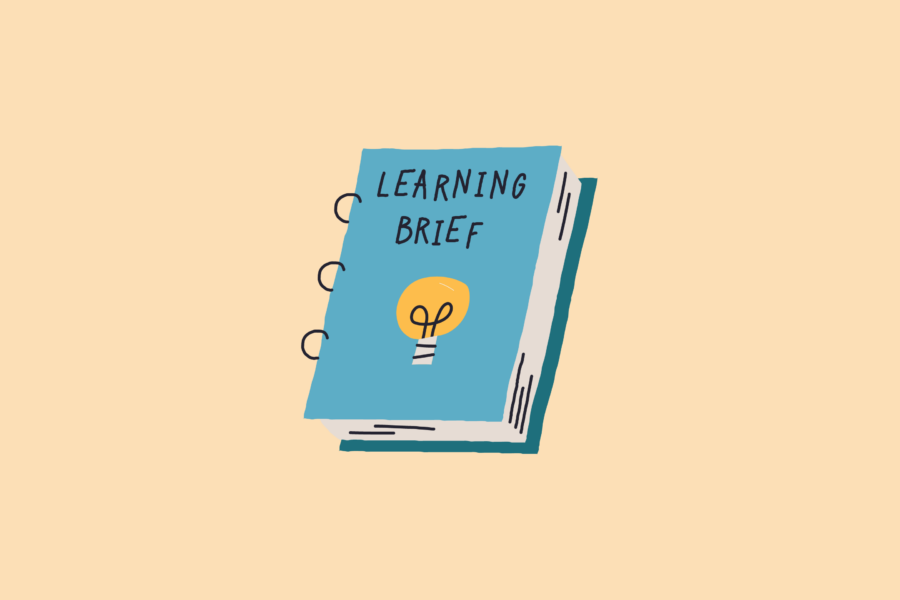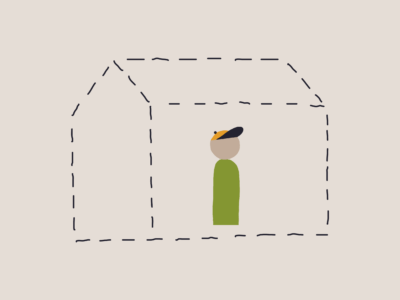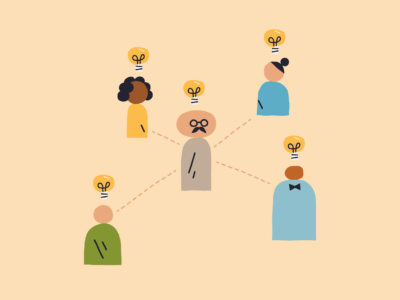Homelessness is a public health crisis. A significant body of literature documents the connection between poor mental and physical health and people who lack safe, affordable, and stable housing. As an organization, we have also worked to understand how key actors in public health, like local health departments and health systems, can also offer critical support and solutions.
Through our Built for Zero initiative, Community Solutions supports communities across the country that are working to measurably reduce and end homelessness toward a state where homelessness is rare and brief, known as functional zero. To strengthen our own understanding, we have explored how local health departments and health systems can strategically participate in a cross-sector system designed to end homelessness.
In this learning brief, we focus specifically on how medically-supported street outreach or street medicine can be integrated into a community’s homelessness response. We have drawn examples from several different U.S. cities and counties and included a toolkit with recommendations and resources for communities seeking to launch a similar health and homelessness program.
The need
Accessing health care requires people experiencing homelessness to overcome significant obstacles, which include a lack of health insurance and financial constraints. They must also contend with competing priorities, such as finding food and shelter, which often take precedence over health.
Although health disparities among homeless populations differ on an individual level, unsheltered homelessness poses particularly harmful risks to health and mortality compared to sheltered homelessness. Unsheltered individuals experience higher rates of physical and mental illness, substance use, chronic health conditions, and premature mortality. Prolonged exposure to harsh environments with little to no protection from environmental hazards such as poor air quality and extreme temperatures can worsen health conditions and further exacerbate poor health for people experiencing unsheltered homelessness.
A 10-year cohort study published in JAMA Internal Medicine found the mortality rate of unsheltered adults was almost three times that of adults primarily sleeping in shelters and nearly 10 times that of the overall adult population, with common causes of death including cancer and heart disease.
Unsheltered versus sheltered individuals were also 25 times as likely to report currently having a physical health condition, a mental health condition, and a substance abuse condition. These increased rates of tri-morbidity suggest that people experiencing unsheltered homelessness have more complex care needs.
Despite having many health disadvantages and needs, people experiencing unsheltered homelessness are less likely to utilize health services compared to the general population and individuals experiencing sheltered homelessness.
These conditions also have significant downstream effects beyond the homelessness response system, including but not limited to health care systems, police forces, 911 and emergency management services, and public health.
In fact, a California Policy Lab study noted that unsheltered people were more likely to report at least one visit to the emergency room in the last six months than sheltered people and were three times as likely to report at least one trip in an ambulance over the same time frame. A 2021 study by Boston Health Care for The Homeless Program found that “health care spending among unsheltered adults averaged $32,331 per person per year — 3.4 times that of sheltered adults.” A study of Emergency Medical Services in Los Angeles found that Incidents for the homeless population occurred at a rate of 1155 per 1,000 homeless residents or 14 times the rate of housed residents.
Street medicine as one solution
Medically-supported street outreach or street medicine is a service designed to address the unique health needs and circumstances of people experiencing unsheltered homelessness by meeting individuals where they are, on their own terms, to reduce any barriers to accessing care and build trust.
According to the Street Medicine Institute, a street medicine service model is an essential first step toward achieving higher levels of care through comprehensive and coordinated care management.
Currently, over 140 cities in 27 countries have some form of a street medicine program supporting their unsheltered homeless population or “rough sleepers.” Although there is limited empirical literature demonstrating formal program outcomes, street medicine teams have reported improved insurance enrollment, decreased emergency visits and hospitalizations, and success in engaging and retaining a subset of patients in care and in continued treatment with medication for opioid use disorder.
Throughout the country, including in Built for Zero communities, there are multiple examples of successful programs that embed medical care in shelter spaces.
- The Cook County Department of Public Health (CCDPH) is currently providing funding to five of their Continuum of Care (CoC) partner agencies to pay for salary and supplies for street outreach staff through their CDC Health Equity Grant. Although CCDPH staff aren’t currently joining street outreach staff to provide medical services, the CoC is very grateful for the recognition of the importance of street outreach. Providing funding for their direct service providers has been hugely helpful.
- The Boston Health Care for the Homeless Program Street Team engages people living on the streets of Boston to build enduring trust, provide medical and behavioral health care, and link individuals to the larger health care system. The team consists of two internists, a family physician, two psychiatrists, a physician assistant, two nurses, a case manager, and a recovery coach.
- The Keck School of Medicine at the University of California’s Street Medicine Program consists of four street medicine teams providing full-service primary care on the street in Los Angeles County. Each team is made up of a clinical provider (such as a physician or advanced practice clinician), a nurse, and a community health worker. The program began in 2018 and saw significant success in its first year: Brett Feldman, PA, the director of the program, reported that emergency department visits went down by 80%, 30-day hospital readmission rates dropped by 75%, and through collaboration with community partners, and 50% of the first 100 people the team treated found housing.
Community Toolkit
We have worked to provide actionable tools and resources that would allow your community to launch a health and homelessness program.
Rationale
“In our community, on a single night in January 202X, _____ people were experiencing homelessness. Of the people experiencing homelessness on that single night in January, _____ were sheltered and ______ were unsheltered.
Based on research, people experiencing unsheltered homelessness were over 4x as likely to report a current physical health condition and 25x as likely to report currently having a physical health condition, a mental health condition, and a substance abuse condition.
Further, studies indicate that the mortality rate of unsheltered adults is nearly 10 times that of the overall adult population. With that data in mind, our community is exploring the resources required to establish a street medicine program that would provide direct care and referrals for unsheltered homeless individuals and begin to build trust between care providers and rough sleeping patients.”
Potential Funding Sources
CDC Workforce Strategy Fund: In late 2022, CDC awarded OE22-2203: Strengthening U.S. Public Infrastructure, Workforce, and Data Systems grant. As a component of this grant, health workforce strategy funds can be used for homeless-related workforce needs and added capacity to public health teams.
Foundations/Philanthropy: Often, funding for ventures in public sectors comes from foundations, and some institutions focus their gifting on strategic areas, including health care, public health, and homelessness. Explore local community foundations that might have upcoming goals or programs around health and homelessness.
Partnerships with local health systems: Local health and hospital systems often collaborate with community members and organizations as they plan the distribution and use of funds in their community benefit grants.
Street Medicine Institute: The Street Medicine Institute (SMI) is built off the work of Dr. Jim Withers, who began street visits in 1992 in Pittsburgh. Today, SMI facilitates and enhances the direct provision of health care to people experiencing unsheltered homelessness where they live. SMI does this by providing communities and clinicians with expert training, guidance, and support to develop and grow their own Street Medicine programs. An SMI Membership includes access to a library of resources and toolkits to support communities as they launch and sustain street medicine programs.
One offering of SMI is a seed grant. SMI’s goal is to assist early-stage street medicine programs in the United States – particularly in areas not currently served by street medicine – advance toward a more sustainable level of operation. Supported by the generosity of the Pulte Family Charitable Foundation, two successful grantees will each receive an award valued at $14,650, which includes:
- $10,000 cash award (suggested use: backpacks, supplies, medications)
- Street Medicine Consultation with SMI expert consultants(s) (valued at $3,000)
- Free program membership to SMI for one year (valued at $750)
- Three free registrations for the 19th annual International Street Medicine Symposium scheduled for September 27-30, 2023, in London (valued at $900)
SMI also provides contracting and consulting services that connect communities and systems of care with experts and board members from SMI’s robust network of street medicine programs. Designed to be a hands-on approach in applying the library of resources that come with membership, a partnership with SMI is a potential way to accelerate the launch of a street medicine program in your community.
Implementation
What do street medicine programs typically look like?
As there is no standardized model for a Street Medicine program, Street Medicine programs vary widely. A scoping review of 110 Street Medicine programs found that the only consistent element among all programs was the provision of direct medical care to people experiencing unsheltered homelessness.1 Beyond this, program specifics — including organizational structure, the types of medical services provided, team size and roles, and funding — differ greatly and tend to develop in response to local resources, capacity, and community needs. Some programs comprise a single provider, while others may be volunteer-run, led by medical students and residents, or operated by independent nonprofits or hospitals.
Programs often begin with minimal programmatic infrastructure,2 with a few people carrying medical supplies and medications in backpacks going to locations where people experiencing homelessness reside, sleep, or dwell, building trusting relationships with them, and delivering care. The Street Medicine Institute’s motto of “Go to the People” emphasizes the importance of listening and learning from the community and adapting to the local context. As such, any Street Medicine program must first get the view from the street, listen and learn, and adapt to meet local needs.
Where could you start?
Embedding Care Providers on PIT Count Volunteer Teams
For resource-limited communities, the annual point-in-time count each January often serves as the most robust and far-reaching outreach program for unsheltered individuals. As Continuums of Care plan volunteer teams for this project, it’s often helpful to invite local health care providers, hospital system leaders, and local health department officials to join the count as volunteers. Although the count may not serve as an opportunity to provide care immediately, it is a crucial step in building relationships between care providers and rough sleepers. This partnership also creates opportunities to demonstrate the need for improved medical outreach services and can be foundational in developing street medicine programs.
Medical Student Training
Local universities with medical students are often a strong starting point for a low-lift project in street medicine and medical outreach. These opportunities often provide students with a sense of the primary care and complex medical needs of a community’s most vulnerable populations and thus can be seen as foundational in a student’s coursework. Below are four universities putting this into practice:
Outcomes & Evaluation
Evaluating street medicine programs and medically focused street outreach is difficult and varies on the scope of the service delivery. Still, some tried and true indicators can be powerful demonstrations of the program’s impact. Although the below examples are just a starting point, partnerships between the local health department, health system, and CoC can brainstorm localized measures to consider.
- Reductions in EMS visits (for unsheltered adults)
- Reductions in ER visits (for unsheltered adults)
- Improved relationships and trust between providers & patients
- Decreased mortality for unsheltered
Endnotes
Enich, Michael, Emmy Tiderington, and Andrea Ure. “Street Medicine: A Scoping Review of Program Elements.” International Journal on Homelessness (2022): 1-49.
Doohan NC, Mishori R. Street Medicine: Creating a “Classroom Without Walls” for Teaching Population Health. Med Sci Educ. 2019 Nov 1;30(1):513-521. doi: 10.1007/s40670-019-00849-4. PMID: 34457695; PMCID: PMC8368862.




